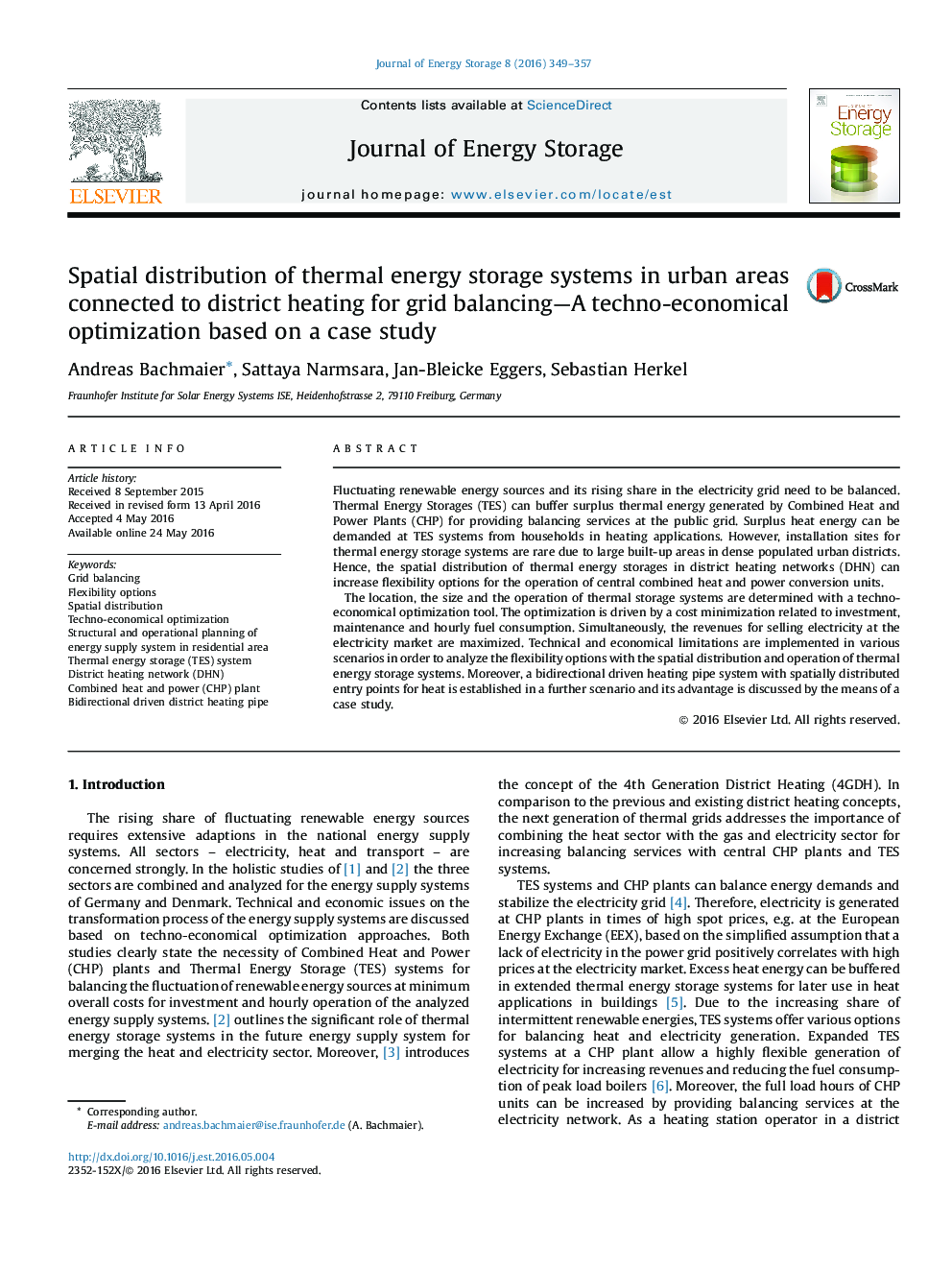| کد مقاله | کد نشریه | سال انتشار | مقاله انگلیسی | نسخه تمام متن |
|---|---|---|---|---|
| 5127397 | 1489014 | 2016 | 9 صفحه PDF | دانلود رایگان |

- A techno-economical optimization tool allows the structural and operational optimization of energy supply systems with storages in residential areas.
- Technical and economical limitations are implemented in various scenarios in order to analyze the flexibility options given by the operation of central thermal energy storage systems.
- A district heating system with spatially distributed entry points for heat can significantly increase the flexibility of heat energy and electricity generation of combined heat and power plants connected to thermal energy storage systems.
Fluctuating renewable energy sources and its rising share in the electricity grid need to be balanced. Thermal Energy Storages (TES) can buffer surplus thermal energy generated by Combined Heat and Power Plants (CHP) for providing balancing services at the public grid. Surplus heat energy can be demanded at TES systems from households in heating applications. However, installation sites for thermal energy storage systems are rare due to large built-up areas in dense populated urban districts. Hence, the spatial distribution of thermal energy storages in district heating networks (DHN) can increase flexibility options for the operation of central combined heat and power conversion units.The location, the size and the operation of thermal storage systems are determined with a techno-economical optimization tool. The optimization is driven by a cost minimization related to investment, maintenance and hourly fuel consumption. Simultaneously, the revenues for selling electricity at the electricity market are maximized. Technical and economical limitations are implemented in various scenarios in order to analyze the flexibility options with the spatial distribution and operation of thermal energy storage systems. Moreover, a bidirectional driven heating pipe system with spatially distributed entry points for heat is established in a further scenario and its advantage is discussed by the means of a case study.
Journal: Journal of Energy Storage - Volume 8, November 2016, Pages 349-357